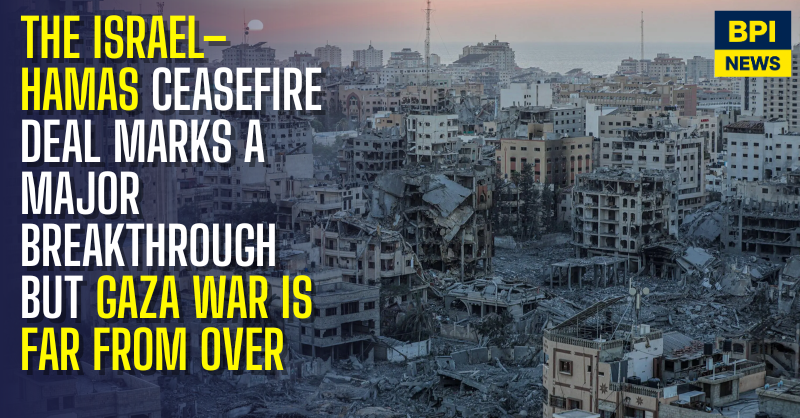The ceasefire and hostage deal between Israel and Hamas, announced after intense negotiations in Egypt, represents the most significant step yet toward ending the two-year Gaza war. But despite the diplomatic breakthrough, there is still no guarantee of lasting peace.
The decisive factor has been the personal involvement of US President Donald Trump, who placed heavy pressure on both Israel and Hamas to reach an agreement. It is being viewed as a major diplomatic victory for Trump, who has long sought recognition as the man who ended the war and may hope the achievement bolsters his bid for a Nobel Peace Prize, due to be announced this week.
Israel began its offensive in Gaza following the Hamas attacks of 7 October 2023, when around 1,200 people were killed, mostly Israeli civilians, and 251 were taken hostage. The war has since devastated Gaza, killing more than 67,000 Palestinians, including more than 18,000 children, according to the territory’s health ministry. The figures are considered credible by the UN and other international bodies.
The agreement forms the first phase of Trump’s peace plan, announced last week at the White House alongside Israeli Prime Minister Benjamin Netanyahu. Under the deal, all surviving hostages held by Hamas around 20 people will be released, possibly as early as Sunday, while the remains of up to 28 others will be returned in stages. In return, hundreds of Palestinian prisoners will be freed from Israeli jails, troops will begin withdrawing from parts of Gaza, and humanitarian aid will increase.
The negotiations, mediated by Egypt, Qatar, and Turkey, followed months of deadlock and a failed Israeli attempt to assassinate Hamas officials in Doha. The incident sparked anger across the region and pushed mediators to intensify talks. Both Israel and Hamas ultimately agreed to the terms after unprecedented pressure from Washington.
Trump has called the deal a “historic and unprecedented event” and “the first steps toward a strong, durable and everlasting peace”. But critical issues remain unresolved, including Israel’s demand that Hamas disarm, the depth of Israel’s withdrawal, and the question of who will govern Gaza. Hamas has agreed in principle to transfer administration to a Palestinian body of technocrats supported by Arab and Islamic nations, but details remain under discussion.
In Gaza, people celebrated through the night, hoping for an end to the devastation. In Tel Aviv, crowds gathered in Hostages Square, calling for the swift release of captives. Yet Hamas leaders remain wary, fearing Israel may resume military operations once the hostages are freed, as occurred when a previous ceasefire collapsed earlier this year.
Inside Israel, public opinion has turned increasingly against the war. Many Israelis view the conflict as a stain on the nation’s reputation, while Netanyahu faces pressure from ultranationalist coalition partners who have threatened to resign if fighting halts. His challenge is to preserve his fragile government while claiming “total victory” over Hamas, as he has long promised.
Netanyahu described the agreement as a “diplomatic, national, and moral victory for the State of Israel”. But notably, unlike Hamas, his statement did not say that the war would end.
For now, the ceasefire stands as a rare moment of hope in one of the world’s most enduring conflicts. Whether it marks the beginning of peace or merely another pause in the bloodshed will depend on what happens next.


